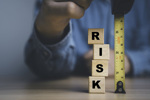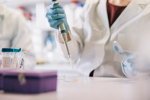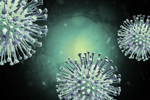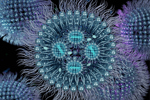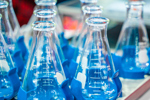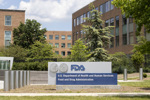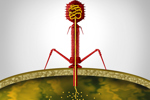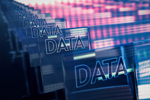-
Reimagining HACCP And Other Process Flow Risk Analysis Methods Using Relational Risk Analysis
Combining relational risk analysis (ReRA) modeling strategies with hazard analysis and critical control point (HACCP) and other process flow risk analysis methods makes them more efficient.
-
Contamination Control Strategies In Low Bioburden Biologic Drug Substance Manufacturing
How do manufacturers apply a contamination control strategy in a non-sterile world, particularly at a low bioburden biologic drug substance manufacturing site? How can Annex 1 apply?
-
Choosing The Best mRNA Manufacturing Strategy
Choosing the right mRNA manufacturing model can define your success. Learn how to weigh control, cost, and flexibility to build a strategy that supports innovation and long-term growth.
-
How To Reduce Batch Loss In Biopharma Production
Batch failures in biopharma remain costly despite improvements. Learn the leading causes in downstream purification and how supplier expertise can help reduce risk and protect production.
-
Lentiviral Vector Upstream Process
Scalable lentiviral vector production is moving beyond adherent systems. Learn how streamlined workflows enable linear scale-up in stirred-tank bioreactors for cost-effective gene therapy manufacturing.
-
Lipid Nanoparticles Boost CRISPR HDR Gene Insertion in Human T Cells
Lipid nanoparticles enable precise, non-viral gene editing in T cells to achieve high HDR efficiency and viability in scalable workflows. Explore how this approach overcomes viral vector limitations.
-
The Module Type Package Wants All Your Equipment To Start Talking
A forthcoming ISPE guide uses case studies to aid in the design of plug-and-play process skids with implications for every step in the manufacturing process continuum.
-
Why Your MVP And Its Evolution Matters To Manufacturing
Minimum viable product is one of the most important inputs to developing a manufacturing process. It defines essentials that matter to the people who make the product.
-
TFF Offers Ideal Anaerobic, GMP Conditions For LBP Concentration
When configured correctly, TFF provides the gentle processing environment and oxygen protection required for strict anaerobes.
-
Speed Meets Precision With Process Development Services
Explore strategies to accelerate biosimilar development that help manufacturers reduce timelines, optimize workflows, and meet regulatory standards while delivering cost-effective therapies.
-
An End-To-End Automated HTP Platform For Cell Line Optimization
Bristol Myers Squibb's high-throughput stable CHO platform produces high-titer, high-quality material in a fraction of the conventional timeline.
-
FDA Draft Guidance On CES Signals More Reliance On Toxicity And PK
The technology to measure alternative metrics is vastly improved. Now, FDA joins other regulators in deprioritizing comparative efficacy studies for biosimilars.
-
Phages As A Pharmaceutical: New EMA Guidance On Antimicrobial Drug Development
The EMA has now issued a draft guidance on quality aspects of phage therapy medicinal products. Rising antimicrobial resistance has renewed interest in bacteriophages to fight pathogens.
-
How To Improve Sponsor–CMO Collaboration Around Digital Deviations
Digital strategies and standardized data models cut manual work, boost accuracy and speed of information sharing, and build trust between sponsors and CMOs.
-
How One Biotech Company Is Accelerating The Drug Discovery Workflow
See how biotech innovation is accelerating drug discovery through AI, miniaturized workflows, and collaborative technologies to reshape how therapies are developed and delivered.
ABOUT BIOSIMILAR MANUFACTURING
Biosimilars are considered to be low-cost substitutions for pricy, large-molecule biologics. However, biosimilars must meet the same quality, safety, and efficacy as their reference biologic. Manufacturing biosimilars requires a more complicated procedure than that of manufacturing small molecule generics. Companies manufacturing biosimilars are focused on creating a chemical structure that is as close as possible to that of the reference product. Failure rates and operational costs pose a challenge for those companies involved in manufacturing biosimilars compared to those manufacturing small molecule generics.
Small molecule generics are created using the same active pharmaceutical ingredient (API) and, therefore, are chemically identical to that of the originator medicine. The manufacturing process for small molecules comprises only one-fifth of the total in-process tests required to meet Good Manufacturing Practice compared to that of biologic medicines (50 vs. 250 in-process tests). In fact, the manufacturing process for a large molecule is so complex, it cannot be duplicated by two different manufacturers, as the cells used in biologic medicines are unique to the company manufacturing each biologic.
Manufacturing a biologic consists of genetically modifying a cell, which becomes the basis for a cell line used for the production of the necessary protein for the biologic medicine. The protein is then separated from the cells and purified. Biosimilars are created from small alterations to the manufacturing process which creates a molecule that is not identical but closely resembles the reference product. While the differences in the biosimilar molecule might be slight, these changes in the manufacturing process of a biosimilar can affect the efficacy and safety of a biosimilar compared to the reference biologic. Over the past decade, the manufacturing process for proteins has become more standardized and the required technology has become increasingly accessible, leading to reductions in biosimilars production costs. As a result, a greater number of companies have begun manufacturing biosimilars, while reference brand manufacturers are setting their sights on bolstering pipelines and manufacturing biobetters to maintain market share for their soon-to-be-off-patent reference products.
BIOSIMILAR DEVELOPMENT NEWS
- Alvotech Announces European Launch Of First-In-Market Biosimilar To Simponi® (golimumab) Globally By Partner Advanz Pharma
- Samsung Bioepis Announces Approval Of Ustekinumab Biosimilar In Japan
- Amneal Announces FDA Approval Of Denosumab Biosimilars Referencing Prolia® And XGEVA®
- Alvotech And Teva Secure U.S. Settlement Date For AVT06, A Proposed Biosimilar To Eylea®
- Zydus And Formycon Enter Into An Exclusive Partnership For The Licensing And Supply Of Biosimilar To Keytruda® (Pembrolizumab), In US And Canada

